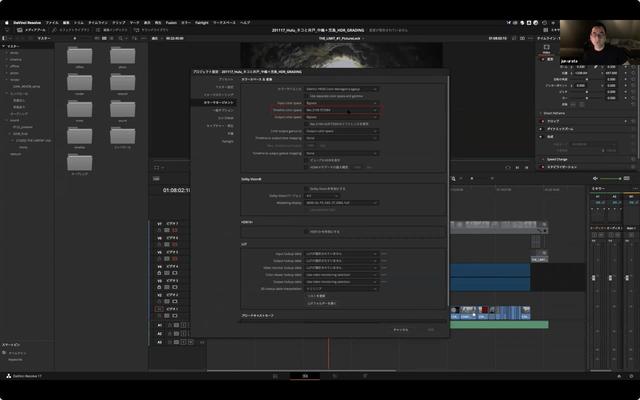Report "Davinci Resolve Monthly Sampler Vol.16".Explain Hulu's 4K HDR workflow
Synchronously recorded audio and video by manual work
"THE LIMIT" has the concept of "restriction", but there were considerable restrictions on the site staff.He recalled that the site, such as buses and taxis, was narrow, and shooting was extremely difficult.
For example, the α7S III is used for the main camera because of its small and high degree of freedom.So Yamamoto proposed a 10 -bit recording of an external recorder assuming HDR grading, but the photographer hoped for the minimum configuration in consideration of a narrow scene.Eventually, H.It is said that the internal record was selected by 265 format S-log.

Next, we introduce applications, images and audio synchronization.The application uses Davinci Resolve version 16.However, at that time, it was a bit delicate, and Davinci Resolve 17 beta 3 or beta 4 was released.Davinci Resolve 17 is equipped with an HDR grading function called "HDR Pallet", and Urata was also interested in Davinci Resolve 17.
Mr. Yamamoto is stable in the beta version, but 17 has been sent off in consideration of the time of reversal.Eventually, the stable version of Davinci Resolve 16.2.He continued to choose 8.
In addition to the camera recording of the α7S III, the audio staff is included in the recorder in addition to the camera recorder of the α7S III.Kachinko and the script were instructed on the spot, saying, "This is the take, cut, file name," and relying on it manually in a way to synchronize the paintings and sounds.
However, he rejoined that the synchronization of the paintings and the sound was a series of tough tasks.The material passed to the offline editor has a huge amount of 100 to 200 cuts per episode, and it has overflowed from 4 channels, which includes actors' pin microphones and gun microphones, with 5 channels.
According to Urata, Davinci Resolve has an audio sync function that automatically synchronizes the specific audio, but if the audio level is too small, it will not be automatically found and a different thing will hit.After all, he had to check from the beginning to the end.
In addition, he suffered from problems such as many unknown files due to the unable to put a clapping in the focus, different actors' pin microphone and gun microphone levels, and different channel layouts.He said, for example, the channel 1 of the audio truck was an actor A, but he had to change the channel layout, such as becoming an actor B when he went to the next cut.
Ultimately, with the help of young staff, Urata's assistants were all manuals in the same period.Mr. Yamamoto recalled, "I thought I was doing something terrible."